 by "ttyymmnn" (ttyymmnn)
by "ttyymmnn" (ttyymmnn)
Published 12/01/2017 at 12:35
 by "ttyymmnn" (ttyymmnn)
by "ttyymmnn" (ttyymmnn)
Published 12/01/2017 at 12:35
Tags: planelopnik history
; Planelopnik
STARS: 17
!!! UNKNOWN CONTENT TYPE !!!
Welcome to
This Date in Aviation History
, getting of you caught up on milestones, important historical events and people in aviation from November 29 through December 1.
!!! UNKNOWN CONTENT TYPE !!!
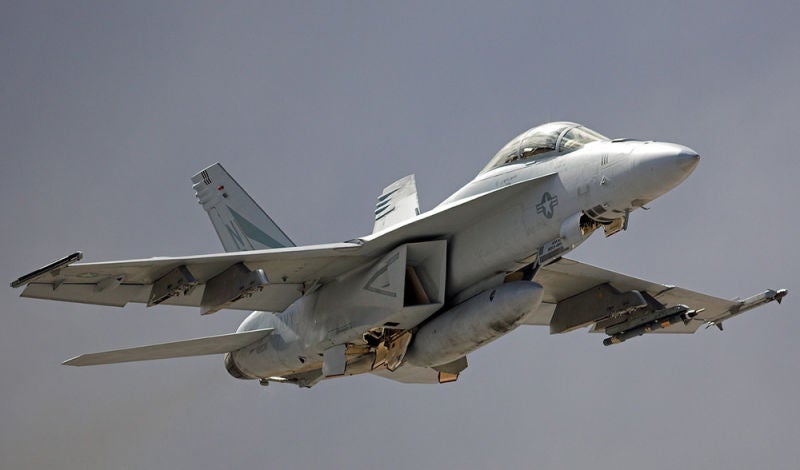
November 29, 1999 – The first flight of the Boeing F/A-18E/F Super Hornet. When the US Navy introduced the F/A-18 Hornet as its new multi-role fighter in 1984, they knew they had a winner on their hands, and the Hornet quickly became the Navy’s primary fighter and attack aircraft. But as the Navy began phasing out the Grumman F-14 Tomcat , and the high-tech stealth McDonnell Douglas A-12 Avenger II flying wing attack plane never materialized, the Navy realized that it needed a larger aircraft, similar in size to the Tomcat or the Air Force’s McDonnell Douglas F-15 Eagle , to fill the roles of both fleet defense fighter and ground attack. Back in the early 1980s, McDonnell Douglas pitched the idea of an enlarged Hornet to the Navy, originally calling it the Hornet 2000. They suggested that a larger aircraft derived from the F/A-18 could carry more weapons, more fuel, and have more powerful engines than its predecessor, and the program was officially announced in 1988. And while the single-seat F/A-18E and two-seat F/A-18F Super Hornet bears a strong resemblance to the original F/A-18, it is, in fact, an entirely new aircraft, not just a scaled-up variant.
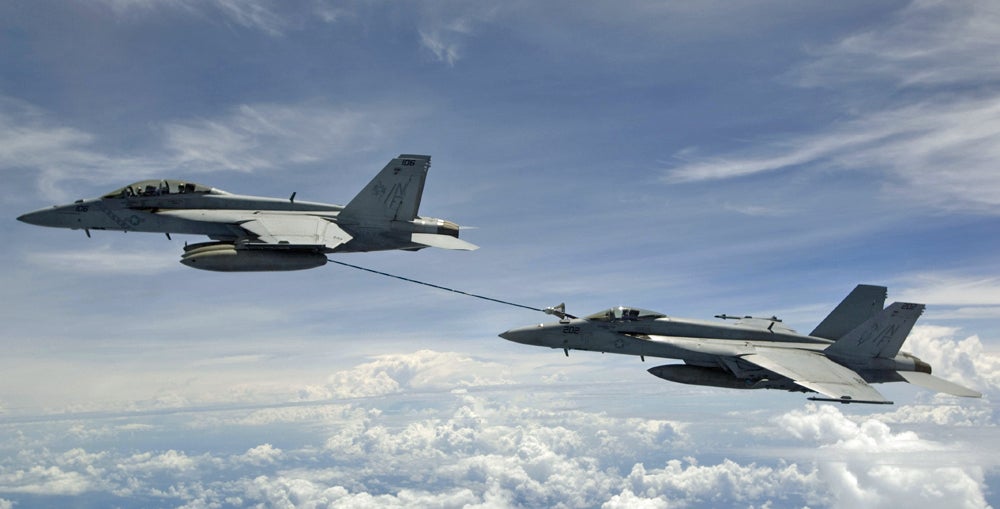
The Super Hornet is roughly 20 percent larger than the Hornet, and 7,000 pounds heavier. It carries 33-percent more fuel, which increases the range by 41-percent over the Hornet. The Super Hornet is also equipped with a “buddy store” refueling system that allows it to act as an airborne tanker, taking over the aerial refueling mission of two other retired Navy aircraft, the Grumman KA-6D Intruder and the Lockheed S-3B Viking . But despite its larger size, the Super Hornet actually contains 42-percent fewer structural parts than the Hornet. The General Electric F414 afterburning turbofans used on the Super Hornet are a more powerful derivative of the F404 engines found on the Hornet, and the same engine that would have powered the canceled Avenger. The F414 engines give the Super Hornet a 35-percent boost in thrust and provide a top speed of Mach 1.8. The engines are fed by distinctive, box-shaped intake ramps similar to those seen on the F-15.
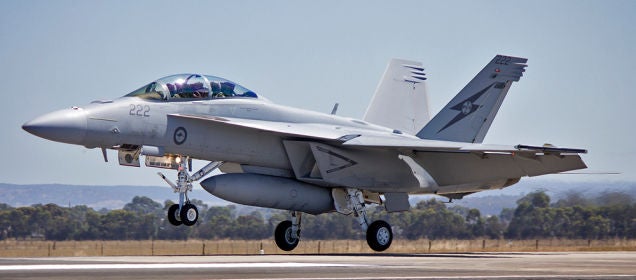
The Super Hornet, nicknamed Rhino to avoid confusion with the Hornet, reached initial operating capability in September 2001 and quickly became a vital part of the Navy’s strike capabilities, flying its first combat missions over Iraq during Operation Southern Watch over Iraq. They have since become regular participants in the ongoing conflicts in Afghanistan, Iraq and Syria. While the Super Hornet has become a stalwart of the US Navy, the US Marine Corps has staunchly opposed adopting the F/A-18E/F, fearing that doing so will compete with their ability to procure the Lockheed Martin F-35B Lightning II , the STOVL variant of the new Joint Strike Fighter. The only other nation currently operating the Super Hornet is Australia, which purchased 24 F/A-18Es to replace its fleet of General Dynamics F-111 Aardvarks , though in November of 2016 the Canadian government announced a plan to purchase 18 Super Hornets while they reconsider their decision to purchase the Lockheed Martin F-35 Lighting II as a replacement for their aging fleet of CF-18 Hornets. However, looming trade dispute between Boeing and Canadian manufacturer Bombardier threatens that sale. Boeing has built over 500 Super Hornets, and the aircraft remains in production. As older Super Hornets begin to show their age, the Navy is seeking to buy more F/A-18Es to fill the gap until the arrival of the F-35C scheduled for 2018. (US Navy photos; Photo by Bidgee via Wikimedia Commons )
!!! UNKNOWN CONTENT TYPE !!!
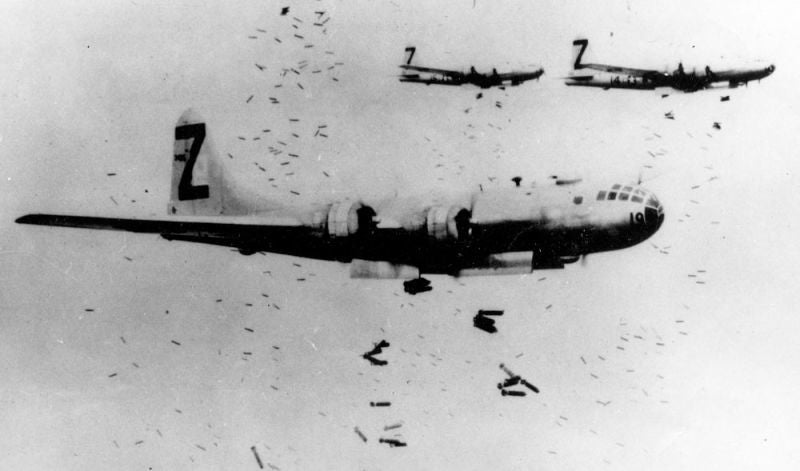
November 29, 1944 – The US Army Air Forces carry out the first incendiary raids against Tokyo. In the closing stages of WWII, as the island hopping campaign brought the Allies closer and closer to the Japanese homeland, American forces steadily increased the number and size of bombing raids against Japan’s manufacturing assets. While manufacturing was generally concentrated in large factories and industrial centers in the US and Europe, Japan’s war materiel was produced mostly in smaller factories and in homes as a cottage industry, rendering traditional “precision” bombing, which was carried out in daylight and from high altitude, largely ineffective. So the decision was made by General Curtis LeMay , head of all strategic air operations against Japan, to switch to fire raids against Japanese cities. For these missions, the bombers flew at altitudes of 5,000-8,000 feet, and at night, since accuracy was not required.
!!! UNKNOWN CONTENT TYPE !!!
The conventional bombing of Tokyo, using high explosives, had commenced on November 24, 1944, when 111 Boeing B-29 Superfortresses struck an aircraft factory on the outskirts of the city. This was followed by another conventional bombing mission on the 27th, before the first incendiary raid was flown on the night of November 29-30, which destroyed 2,773 structures. The B-29s were armed with M-69 incendiary bombs , and though a single M-69 munition weighed only six pounds, it was dropped inside a canister that held 38 munitions each. Normally, each B-29 carried 37 bombs, totaling 1,400 individual fire-starting munitions per plane. After it was dropped, the container opened automatically and dispersed the smaller munitions, which ignited on contact with the ground and spread a highly flammable jellied gasoline compound. Though conventional bombing missions continued, the fire raids against Tokyo rose to a horrifying crescendo with Operation Meetinghouse on March 9-10, 1945. In a mission that has gained notoriety as the single most destructive bombing raid in history, 346 B-29s left Guam and headed for the Japanese capital. Arriving over the city at 2:00 am on March 10 (Guam time), the bombers dropped almost 1,700 tons of incendiaries on a city built almost entirely of wood. The resulting firestorm destroyed 16 square miles of buildings, or 7-percent of the city’s urban area. The fires burned so fiercely that many of those killed were suffocated as the fires consumed all the oxygen.

Following the raid, Tokyo police estimated that nearly 84,000 people had been killed, 41,000 injured and 1,000,000 left homeless. Postwar estimates are as high as 100,000 killed. The USAAF lost 14 aircraft, below the 5-percent loss rate that was considered acceptable. The firebombing raids continued in the belief that the attacks would lead the Japanese government to capitulate. They did not. According to
one estimate
, the incendiary campaign resulted in the destruction of 180 square miles in 67 cities, and killed more than 300,000 people, a number that exceeds the death toll in both atomic bombings combined. At the time, the US had few moral qualms about destroying such large areas of cities along with their civilian populations. Military planners believed that these raids would shorten the war and save American lives by preventing a costly invasion of the Japanese home island. It wasn’t until the
atomic attacks on Hiroshima and Nagasaki
in August of 1945 that the war finally ended. But there were still two more firebombing raids after Nagasaki before Japan’s formal surrender.
(US Air Force photos)
!!! UNKNOWN CONTENT TYPE !!!
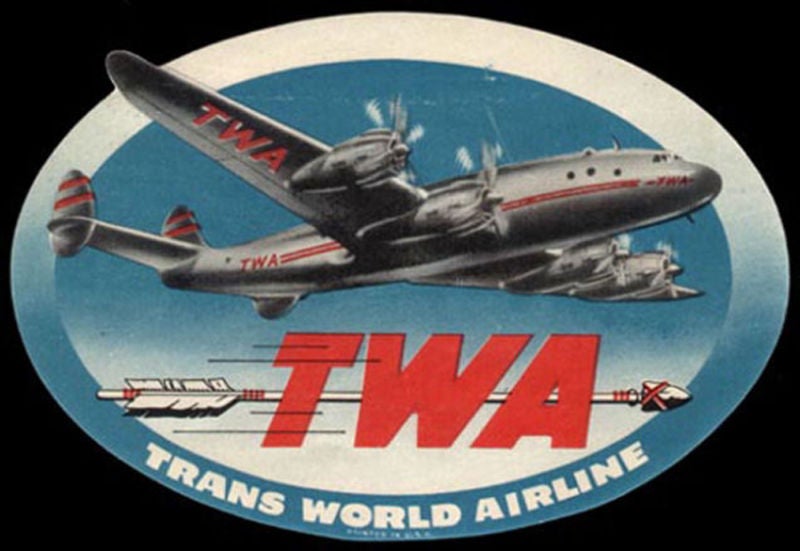
December 1, 2001 – The final flight by Trans World Airlines. TWA’s 76-year history began 1925, when a fledgling company called Western Air Express was awarded a contract to fly mail from Salt Lake City, Utah to Los Angeles, California. About a month later, the company carried their first passengers in a Douglas M-1 biplane , though the flight was anything but luxurious. Modern travelers are quick to complain about only getting a bag of peanuts in coach, but those first two passengers spent the 8-hour flight sitting on sacks of US Mail. In 1929, another startup company, Transcontinental Air Transport (TAT), began offering cross-country trips that combined air and rail travel, carrying passengers from New York to California in 51 hours. TWA Founder Clement Melville Keys had hired famed aviator Charles Lindbergh to help develop the transcontinental network, and opened new airports across the country. Then, in 1930, TAT joined with Western Air Express at the urging of the US Postmaster, who wanted to expand air mail routes. The merger brought Lindbergh together with Jack Frye , another early pioneer of aviation who would lead T&WA through its meteoric rise from 1934-1947, and the new company bragged that it was “The Airline Run by Flyers.”
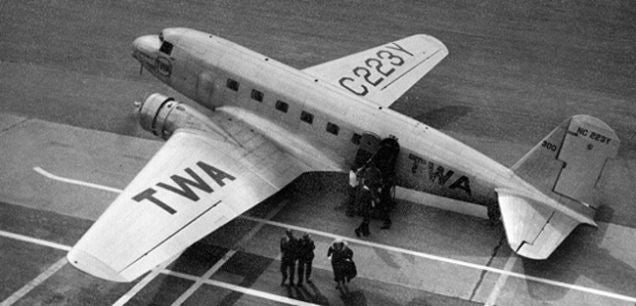
But a promising future almost ended at birth when T&WA suffered the crash of a wooden-framed Fokker F.10 that claimed the life 8 passengers, including famed Notre Dame football coach Knute Rockne . T&WA struggled to overcome the negative press associated with the crash, as well as a public that was already skittish about flying. T&WA needed new, modern aircraft, but they could not purchase the Boeing Model 247 because Boeing had an exclusive contract to sell them to United Airlines, a subsidiary of Boeing. So Frye turned to the Douglas Aircraft Company , who delivered the DC-1 , DC-2 , and eventually DC-3 airliners, which far surpassed the Model 247 and still fly to this day. By 1934, T&WA was offering transcontinental flights—with three stops along the way for fuel—for $160, which is nearly $3,000 in today’s money . In 1941, eccentric billionaire Howard Hughes purchased a controlling stake in the company, and oversaw the purchase of the larger and more modern Lockheed Constellation , a four-engine airliner which cut transcontinental flight times to about nine hours. During WWII, T&WA prospered under the leadership of Hughes and Frye, flying millions of miles for the US Army and providing supplies to far flung corners of the globe.
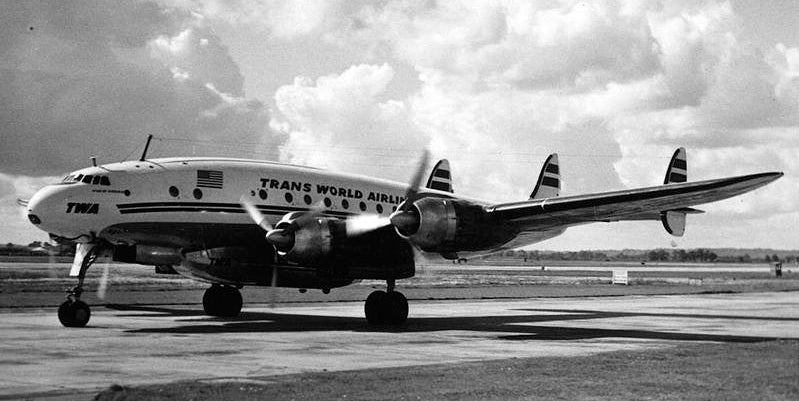
Following the war, TWA became a truly global passenger airline, with Lockheed Constellations and Douglas DC-4s flying to Cairo, Bombay, Ceylon and Manila. But Hughes accused Frye of overextending the airline, and stock prices fell. Frye resigned in 1947, and thus began a revolving door of corporate leadership that continued until TWA’s demise. In 1950, the company officially became known as Trans World Airlines in a nod to its global destinations, and Hughes finally brought the company into the jet age with the purchase of 63 Convair 880 airliners. But the delay in adopting the new airliners meant that TWA had lost its competitive edge, and Hughes was removed from the helm of the company.
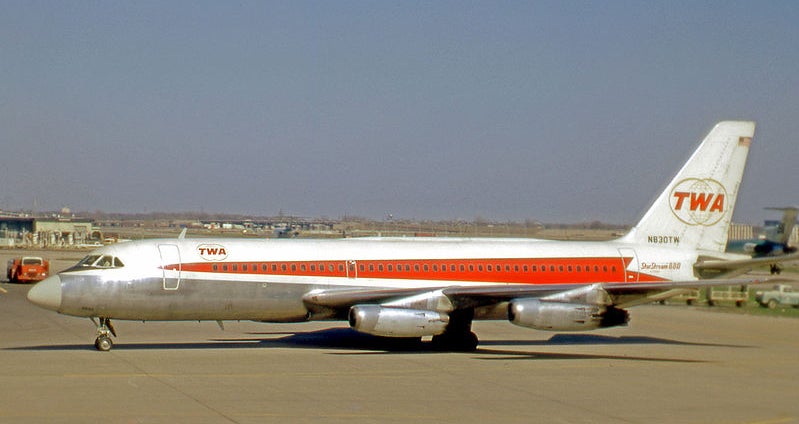
TWA achieved a few significant firsts, becoming the first airline to hire an African-American flight attendant, and the first to show in-flight movies. In 1969, they carried more transatlantic passengers than any other carrier, and TWA was the third largest airline in the world by 1972. In the 1980s, TWA had become more of a business interest for investors than a pilot-centered aviation service, though the airline did make perhaps its greatest achievement by carrying more than 50 percent of all transatlantic passengers in 1988. By 1995, though, TWA had entered bankruptcy and, despite an attempt to reinvent itself as a smaller domestic airline, TWA was purchased by American Airlines in 2001. TWA’s final, ceremonial final Flight 220 from Kansas City to St. Louis was flown by TWA CEO William Compton at the controls of a
McDonnell Douglas MD-80
(N948TW). The story of one of the world’s greatest global airlines had come to an end with a flight of just 240 miles.
(Photo via San Diego Air & Space Museum; photo by RuthAS via
Wikimedia Commons
; photo by RushAS via
Wikimedia Commons
)
!!! UNKNOWN CONTENT TYPE !!!
!!! UNKNOWN CONTENT TYPE !!!
!!! UNKNOWN CONTENT TYPE !!!
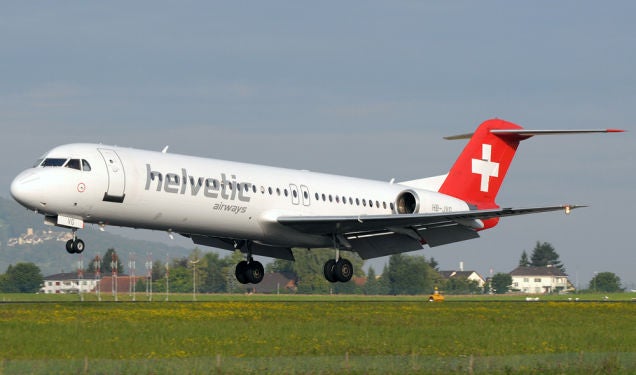
November 30, 1986 – The first flight of the Fokker F100,
a medium-size twin-engine airliner and the largest jet airliner built by
Fokker
before the company went bankrupt in 1997. Developed to replace the smaller
Fokker F28 Fellowship
, the 100-seat F100 appeared at a time when there were few competitors for airliners of that size. Initial sales were strong, but competitors soon caught up and sales fell. In spite of the slump, it was ultimately financial mismanagement that doomed the storied aircraft builder, leading its parent company,
Daimler Benz Aerospace
, to shut down the company in 1996. Fokker built 283 F100s before the company folded, and 165 remain operational, mostly with smaller regional airlines.
(Photo by Biggerben via
Wikimedia Commons
)
!!! UNKNOWN CONTENT TYPE !!!
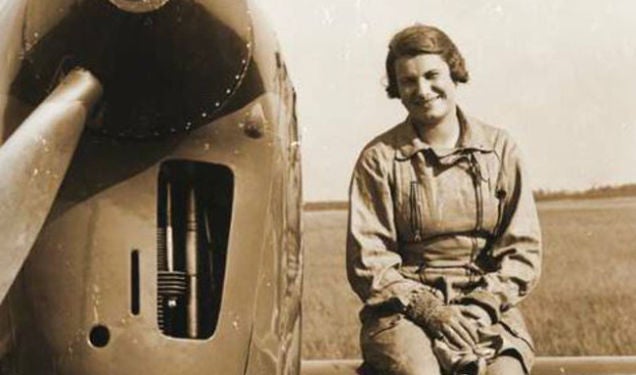
November 30, 1934 – The death of Hélène Boucher. Boucher was born on May 23, 1908, and purchased her first airplane, a de Havilland DH.60 Gipsy Moth , in 1931 and learned navigation and aerobatics. She made a name for herself competing in air races, and, in 1933 and 1934, she set several world records, including one for altitude for a woman pilot and several speed records for flight over a distance of 1,000 km while flying a Caudron C.460 race plane. Boucher died while flying a Caudron C.430 Rafale when the aircraft crashed into a forest, and Boucher was posthumously made a knight of the Légion d’honneur , France’s highest honor. She was also the first woman given the honor of lying in state at the Hôtel national des Invalides . (Photo author unknown)
!!! UNKNOWN CONTENT TYPE !!!
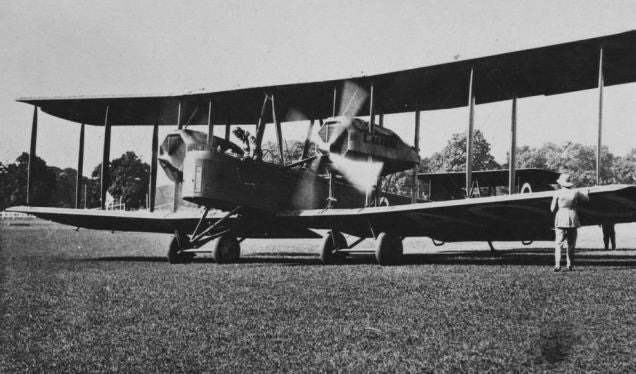
November 30, 1917 – The first flight of the Vickers Vimy, a twin-engine heavy bomber developed for the Royal Air Force late in WWI. By the end of the war, only three had been delivered to the RAF and did not take part in the conflict. However, the size and long range of the Vimy made it an excellent candidate for long-distance record setters, and a Vimy flown by John Alcock and Arthur Brown has the distinction of being the first aircraft to complete a non-stop transatlantic flight in 1919. Others undertook notable long-distance flights from England to Australia and England to South Africa. With modifications to enlarge the fuselage, the Vimy was developed into the Vimy Commercial with accommodations for 10 passengers. The type was finally retired in 1933. (State Library of South Australia photo)
!!! UNKNOWN CONTENT TYPE !!!
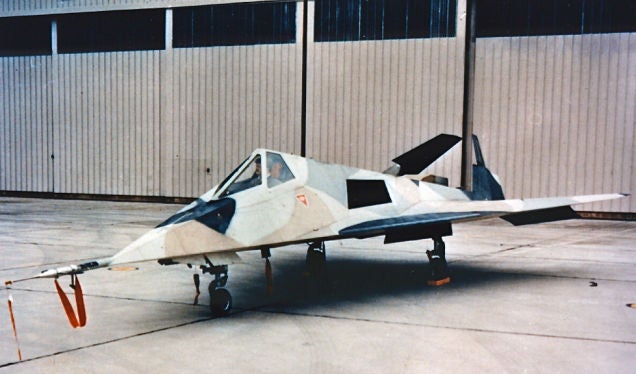
December 1, 1977 – The first flight of the Lockheed Have Blue , the code name for Lockheed’s proof of concept aircraft that demonstrated the capabilities of stealth aircraft design and developed manufacturing techniques and design elements that would be used on the production Lockheed F-117 Nighthawk . Unlike all previous aircraft that had been designed by aeronautical engineers, primary design of the Have Blue was performed by electrical engineers who helped created the faceted shape that deflected radar signals and reduced the aircraft’s radar cross-section . Two aircraft were built, and both were lost to crashes, though both pilots survived. Despite the mishaps, Have Blue was deemed a success, and would lead to the follow on program code named Senior Trend that developed the F-117. (US Air Force photo)
!!! UNKNOWN CONTENT TYPE !!!
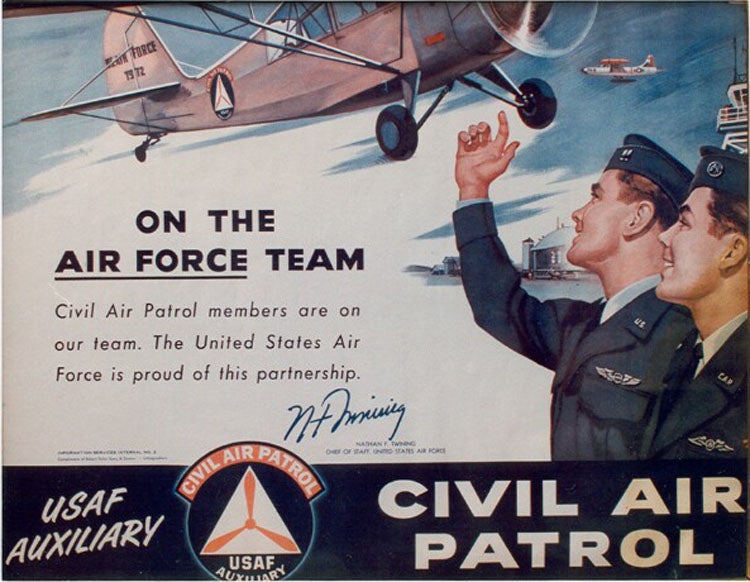
December 1, 1941 – The Civil Air Patrol (CAP) is activated. Originally envisioned in the 1930s as a civilian complement to America’s military flying branches, the CAP was officially activated by Administrative Order 9 , signed by New York Mayor Fiorello LaGuardia , Director of the Office of Civilian Defense. During WWII, civilian pilots flew surveillance missions to spot German U-boats off the American coast, and eventually located 173 enemy submarines, sinking two. After the war, the CAP became the civilian auxiliary of the US Air Force, though it lost its offensive capabilities, and today, CAP pilots provide search and rescue services, disaster and humanitarian relief, and assist the US government with border patrols and drug interdiction. They are also instrumental in the education of new pilots, and help experienced pilots obtain Federal Aviation Administration ratings.
!!! UNKNOWN CONTENT TYPE !!!

December 1, 1932 – The first flight of the Heinkel He 70 Blitz ( lightning ), a high-speed mail and passenger aircraft designed by Siegfried and Walter Günter of the Heinkel Flugzeugwerke to replace the slower Lockheed Vega and Lockheed Orion . Powered by a single BMW VI water-cooled V-12 engine, the He 70 captured a total of eight world speed records for its day, and Deutsche Luft Hansa operated the He 70 as a mail and passenger plane from 1934-1937 with accommodations for four passengers. During the Spanish Civil War , the He 70 was pressed into service as a fast reconnaissance bomber, but its lack of self-sealing fuel tanks and magnesium construction made it dangerously susceptible to fire. While the He 70 was not suited for duty in WWII, its elliptical wing and other design features would find their way into the Heinkel He 111 twin-engine medium bomber. (Photo via San Diego Air and Space Museum)
!!! UNKNOWN CONTENT TYPE !!!
!!! UNKNOWN CONTENT TYPE !!!
!!! UNKNOWN CONTENT TYPE !!!
!!! UNKNOWN CONTENT TYPE !!!
!!! UNKNOWN CONTENT TYPE !!!
!!! UNKNOWN CONTENT TYPE !!!
!!! UNKNOWN CONTENT TYPE !!!
If you enjoy these Aviation History posts, please let me know in the comments. And if you missed any of the past articles, you can find them all at
Planelopnik History
. You can also find more stories about aviation, aviators and airplane oddities at
Wingspan
.
!!! UNKNOWN CONTENT TYPE !!!
 "davesaddiction @ opposite-lock.com" (davesaddiction)
"davesaddiction @ opposite-lock.com" (davesaddiction)
12/01/2017 at 12:48, STARS: 1
Saw one of these yesterday and thought of you!
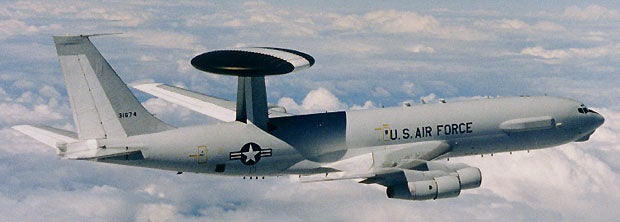
 "ttyymmnn" (ttyymmnn)
"ttyymmnn" (ttyymmnn)
12/01/2017 at 13:34, STARS: 1
Thanks! Where did you see it?

12/01/2017 at 15:37, STARS: 0
The War Department had many programs going to take advantage of the flammability of Japanese buildings, including the bat-bomb . Code-named Xray or Project X, the scheme involved attaching small incendiary devices to Mexican free-tailed bats, who would then be induced into hibernation and loaded into canisters (produced by a company owned by Bing Crosby!) to be dropped over Japan. The canisters would open and the bats would awaken and fly off, roosting in nooks and crannies of Japan’s buildings before the bombs would activate, spreading fires across the country.

The crazy thing was, it actually worked, after a fashion. During testing several armed bats escaped, roosting in buildings around Carlsbad AAF, with predictable results.

Fortunately for the bat population, the plan was canceled in ‘44.
 "ttyymmnn" (ttyymmnn)
"ttyymmnn" (ttyymmnn)
12/01/2017 at 15:40, STARS: 1
That’s some crazy shit, there. At least they knew it would work!
 "ttyymmnn" (ttyymmnn)
"ttyymmnn" (ttyymmnn)
12/01/2017 at 15:41, STARS: 1
Mexican free tails are tiny, though. We have them by the millions here in Austin, where they nest under the bridges and overpasses. I don’t see how it could carry anything.

12/01/2017 at 15:47, STARS: 1
They selected free-tails because they can carry more than their own weight, in fact:
The project was considered serious enough that Louis Fieser , the inventor of military napalm , designed 0.6 ounce (17 g) and one ounce (28 g) incendiary devices to be carried by the bats
Now, that’s not much individually, but multiply by the 40 bats carried in one bomb, and then again by the number of those bombs a B-29 could loft, and things get serious.
 "davesaddiction @ opposite-lock.com" (davesaddiction)
"davesaddiction @ opposite-lock.com" (davesaddiction)
12/01/2017 at 18:32, STARS: 0
In flight, in Tulsa, on my drive home.
Was like “what the...? Cool!!”
 "ttyymmnn" (ttyymmnn)
"ttyymmnn" (ttyymmnn)
12/01/2017 at 18:46, STARS: 1
That would have been super cool. When my wife and I were flying back from Europe, we were coming down the coast of Labrador and we overtook a C-5 not all that far below us. Not something you see every day!
 "davesaddiction @ opposite-lock.com" (davesaddiction)
"davesaddiction @ opposite-lock.com" (davesaddiction)
12/01/2017 at 22:14, STARS: 0
Awesome!